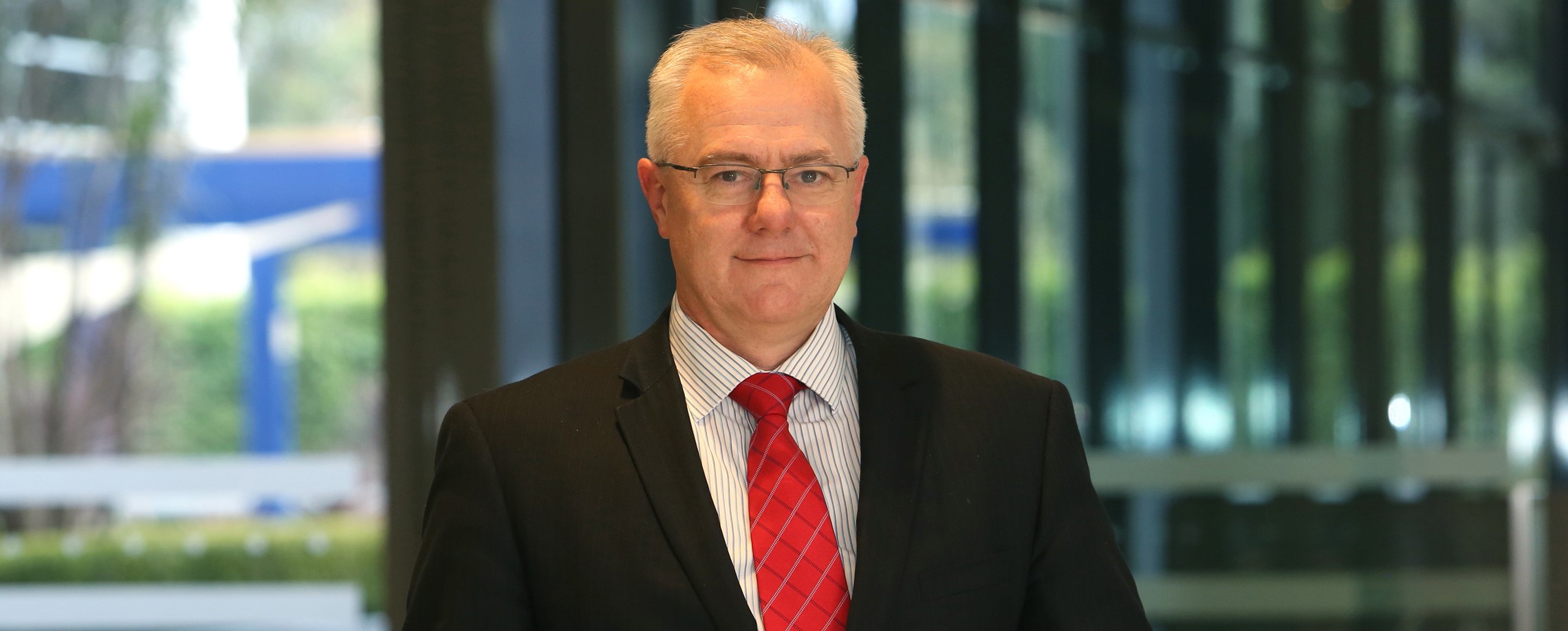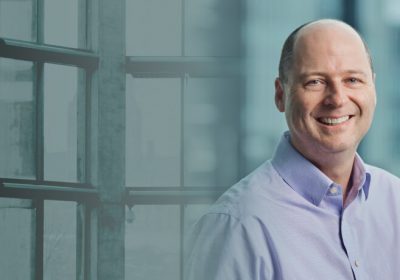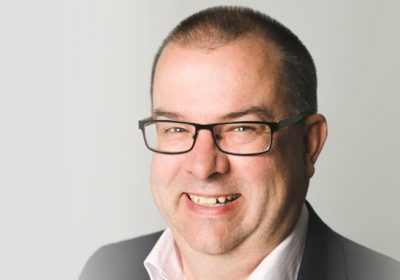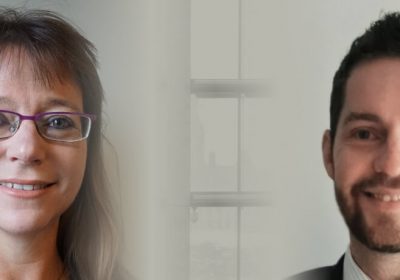
- Author: Emma Foster
- Posted: February 27, 2024
Digital workforce delivers top marks for University of Sydney CFO, Wayne Andrews
The University of Sydney’s CFO Wayne Andrews’ team has developed a 450-strong digital workforce that’s quietly transforming service delivery at the prestigious institution, liberating an estimated 500,000 hours for staff and students to deliver savings exceeding $50 million.
When Wayne Andrews made a career leap to become CFO of the University of Sydney after more than two decades in multinational private sector firms, he hadn’t imagined he’d be championing a first-of-its-kind intelligent automation project at the prestigious institution.
“It’s been a bit of a passion project for me,” says Andrews, who joined the $3 billion establishment in 2016 with a remit to ensure the university’s financial plan, funding, capital, investments and risk management supported the university’s ambitious strategy.
So far, he estimates his “hobby” project, known as the Automation & Innovation Hub – or AI Hub, has delivered the university savings of more than $50 million since its 2018 launch through the development of a workforce of 450-plus digital workers which are quietly transforming internal services used by the institution’s students and staff.
“The AI Hub team’s savings run rate is now at about $30 million and their KPI is to add $5 million to that every year,” says Andrews, who gained deep technology expertise during more than 16 years as a former finance executive at tech giants DXC and Oracle.
But while it’s “saving a ton of money”, Andrews says the more important success measure for the innovation incubator is its positive impact on service delivery. “It’s making our students’ and our staff’s experience much better,” he says, estimating around 500,000 hours of time have been “liberated” by the solutions delivered. “The bots we’ve developed have been welcomed with relief by those people who simply couldn’t get enough staff to do all the things they need to do.”
Intelligent Automation to the rescue
Andrews traces the genesis of the AI Hub – which now has a team of more than 20 staff most of whom are graduates of the University of Sydney’s engineering, IT and business schools – to his early observations when first taking hold of the university’s CFO reins.
Besides grappling with the sheer scale and diversity of the enterprise – University of Sydney has around 70,000 students and 9000 staff, manages around 10,000 hectares of land across Australia consisting of campuses, farmland and research bases, has an investment portfolio valued at $4 billion, and runs well over $1 billion worth of research annually – Andrews says he was also confronted with “very immature systems and technology” in an organisation that “behaved more like a collective than a corporation”.
“I quickly found that each academic has their own discipline they think of as their own small business, so you end up with thousands of individual solutions to help run each small business, while at the same time you’re running a $3 billion enterprise. Bringing that together was quite fascinating… and hard,” he says.
“The university had a track record of attempting to implement enterprise systems and making a muddle of it because they were trying to capture the requirements of all of those unique small businesses. At the time I joined, we had around 700 different technology software solutions, not all of them fit for purpose.”
Andrews tried for some quick wins by applying his deep technology expertise, starting with a new system to improve academics’ travel and expenses management. But it proved challenging.
“I didn’t realise it would be like performing open heart surgery, when I thought it was mending a cut. It took me two years to bed it down and get people comfortable.”
That’s when the potential of intelligent automation arose.
From trial-run to treasure
It started as “a bit of an experiment”, Andrews says, when colleague Steve Blunt, later the general manager of the university’s AI Hub, created a simple chatbot that helped academics track the status of their supplier invoices through the accounts process. “It wasn’t really solving a lot, but we saw the potential and it gave us enough confidence to invest some money and see where it could take us.”
Partnering with EY and using the platform of enterprise robotic process automation pioneer SS&C Blue Prism, the team began to develop a few robotic processes with intelligent automation leveraging the university’s business intelligence. Following early successes, the solutions generated by the AI Hub grew exponentially, now numbering circa 400, and its cutting-edge innovation has been recognised in multiple industry awards.
“Intelligent automation is where we play now, and it’s much more effective than just automating processes,” Andrews says. “I think of robotic process automation as the train tracks that you build for these more advanced technologies – machine vision and machine learning – to communicate and move data back and forth.”
Time-liberating improvements
An example of one of the earliest solutions was an automated process designed for the university’s student administration centre to help manage the circa 1.1 million unique inquiries emailed in each year. “Believe it or not, there were people in the university whose job it was to read each of those inquiries to simply identify the subject of the email and put it into a ServiceNow queue so the right person could deal with it,” Andrews says. The accuracy of the process, which uses machine learning, has improved as it’s continued to learn from around 3.3 million inquiries over three years.
“The consequence is that our administrative staff now have much better jobs, and the success rate of the technology is about the same as the people, at 97 percent,” he says, adding that the team is now taking the solution a step further. “We’ve recently launched a pilot in which we’re using generative AI to quickly read the inquiry, interpret it, interrogate the university’s vast data banks of knowledge articles and policies and procedures to work out a model solution for the student, send it back to an agent who assesses it before responding to the student.”
Another example has been a solution to improve the onboarding process for staff. “At the beginning of every semester, once you know how many students are coming, you need to supplement your academic workforce, each of whom needs to be issued a contract. The processes in the HR software program are built to put people on one at a time through an orderly workflow, which works very well, except when you’ve got 2000 people that you need to start within a week. It was enormously difficult to get lecturers in front of students simply because we couldn’t get the contracts issued quickly enough so we built an intelligent automation solution to do the task.”
Productive pipeline
The AI Hub team is targeting development of at least 50 new bots annually and Andrews expects the number of digital workers to exceed 1000 within the next few years, generating an annual savings run rate for the university of around $50 million. Remembering that the Hub is, service, rather than savings lead. If you streamline and improve staff and student experience, savings are the happy accident of a service and staff experience lead philosophy.
“That would translate to around 1 million hours liberated to provide better customer service, over the life of the AI Hub,” he says. He notes that the operational investment to run the hub is “trivial” compared to the savings generated and additional income the team now earns by providing intelligent automation consulting services to external customers.
But, while there’s no end of use cases, Andrews flags the biggest challenge to accelerating solution delivery is people’s willingness to absorb change. “The technology is the easy part,” he says. “But if you’re just technology led, people are going to reject you. The secret sauce in what we do is to build relationships and the social licence across the enterprise to be welcomed in, to engage with people, to understand their problems and lead them through a solution that helps them improve their services and lives.”
Wayne will be speaking on the topic of ‘CFOs Leading the AI Revolution‘ on the upcoming CFO Lunchtime Live WebCast on Tuesday 19th March 2024 (12pm AEDT)
For your instant login visit > https://www.cfolunchtimelive.com.au/ai/








